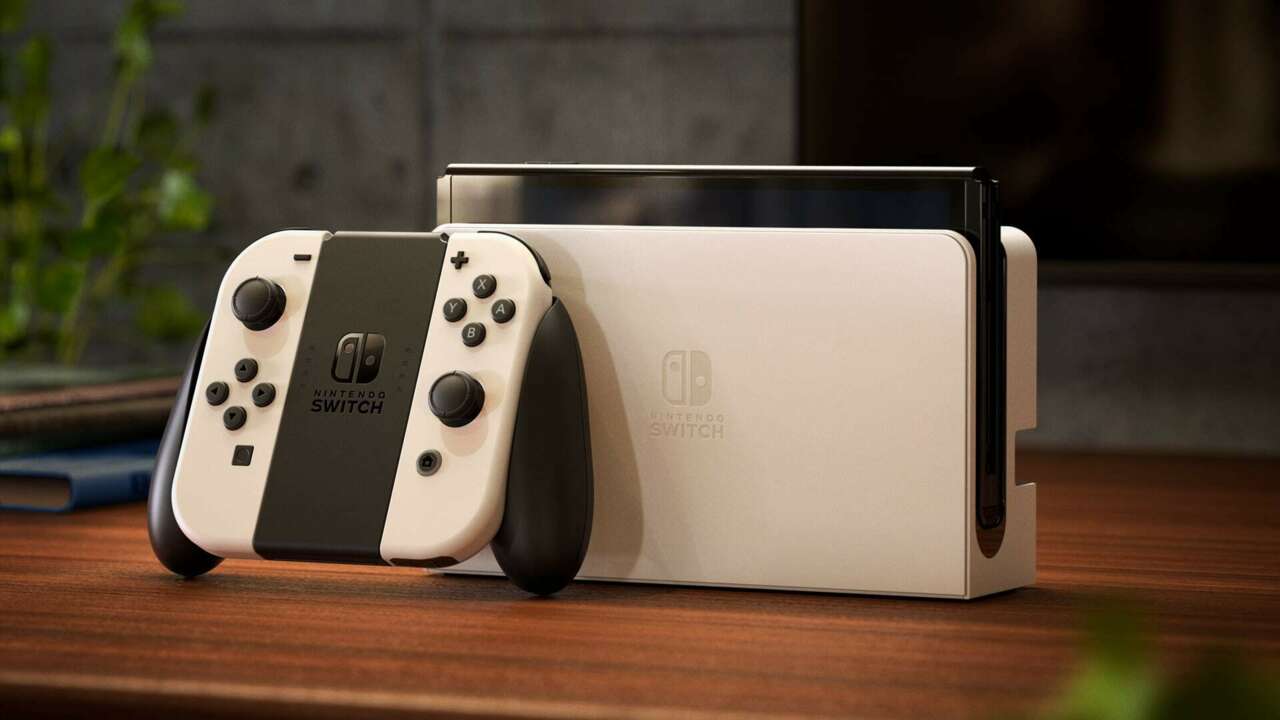[ad_1]
Nintendo’s announcement of a new Switch OLED model elicited more moans than bangs, judging by the reaction from many on the internet. Perhaps expectations had been inflated by months of reports and rumors suggesting this new model would be a significant power upgrade. Maybe after four years with the Nintendo Switch, fans just crave a bigger splash. For some reason, the modest feature upgrade isn’t a game-changer that many Switch users (or potential owners) were hoping for. But as a portable gamer who has never felt comfortable committing to the Switch Lite, it seems like the perfect fit for my use case.
The OLED Switch upgrades are undoubtedly minimal. The mere fact that Nintendo is giving it the name of its biggest novelty – the new, slightly larger OLED display – should show that this is more of a step than a leap. It contains other improvements, like a better kickstand, more internal storage and a LAN port built into the docking station. None are really upsetting, especially when compared to expectations that a new Switch would bring performance improvements, including the ability to come out in 4K. A true “Switch Pro” upgrade with 4K support and a faster processor may still be coming, but it’s not. And while a technical upgrade would be welcome as some games have been shown to be poor relative to the hardware limitations, the OLED model seems like a welcome upgrade until this theoretical new model emerges.
I have always treated the Nintendo Switch like a portable console. I can probably count the number of times I’ve moored it with both hands, and it has never been moored for long. This habit made the Nintendo Switch Lite a tempting proposition: a smaller form factor and bright colors seemed like a fun way to keep playing my Switch library in a way more akin to my long history with PCs. Nintendo pocket.
At the same time, I was still held back by a nagging doubt. Would I miss the option to dock the system on the rare occasion that I want to? What if my kids want to play multiplayer games with me on the big screen? Would I have missed it? I never bought a Switch Lite because these questions made me perpetually afraid to take the plunge. I didn’t want to cut off access to the Switch’s namesake function. I wanted an upgrade that suited me as a portable player but didn’t lock me in.
I will admit a certain degree of thirst for technology. I’m the kind of person who happily followed Nintendo through various DS and then 3DS upgrades. That probably makes me the perfect Nintendo customer – in my 30s with disposable income, childlike affection for Mario and Pikachu, and a high degree of temptation for the bright and the new. So part of my lingering desire for a Switch Lite was just that I wanted the newest thing, but what held me back was that it didn’t really suit my needs.
The OLED Switch, by comparison, seems to strike this much more consistent balance. It’s slightly bigger and heavier, but by such a small margin that I doubt I would ever notice it. The screen upgrade will be appreciated and I love the new white / black color scheme. The built-in LAN port is useful when I want to connect the system, but more importantly, the upgrade does not undo my capacity to anchor the system. I always have the possibility to change with my Switch.
I wanted an upgrade that suited me as a portable player but didn’t lock me in.
The OLED Switch is not for everyone. Obviously, if you treat it like a console first and foremost, the marquee’s new major feature basically doesn’t make sense to you. This system is aimed at portable gamers, and more specifically those like me who still want to connect their systems. Nintendo account data from 2017 showed that 30% of Switch owners played in handheld mode more than 80% of the time. In comparison, 20% played in dock mode 80 +% of the time, so there is a relatively small but still significant difference in system usage. And naturally, this is old data, so the breakdown may have changed since then, especially with the wave of new adopters last year amid the COVID-19 pandemic.
Still, if we assume the numbers are still roughly accurate, it’s easy to see why Nintendo is releasing this new model. With over 80 million Switch systems sold, an upgrade that attracts around 30% represents tens of millions of potential customers. In fact, this 2017 data may have influenced Nintendo’s decision to release the Switch Lite in 2019. Everyone agrees that the Switch Lite is doing well, but Nintendo must see an open market opportunity that it does. did not reach with the handheld. only model. The internet’s reaction to the OLED Switch may have been toned down, but the impact on sales almost certainly won’t, especially considering the higher price tag.
So, assuming I can find one – an open question if there ever was one, given recent trends in hardware shortages – I’ll be happy with a slightly improved Nintendo Switch. It seems straightforward to me, as a portable gamer who has never felt completely comfortable committing to a handheld forever and ever.
Watch live broadcasts, videos and more from GameSpot’s summer event. Check it out
[ad_2]

